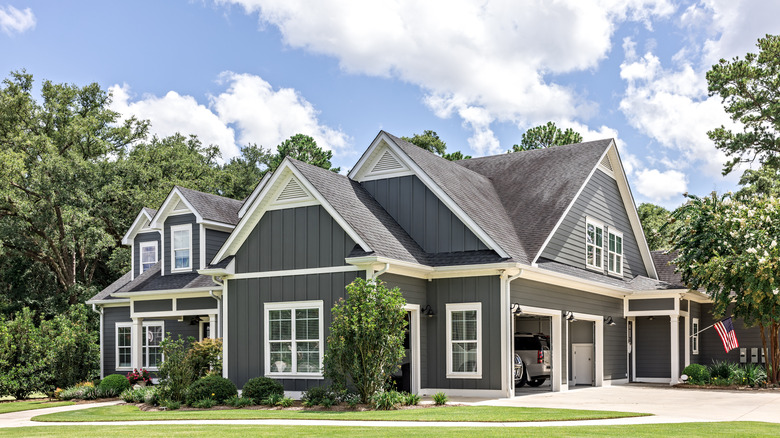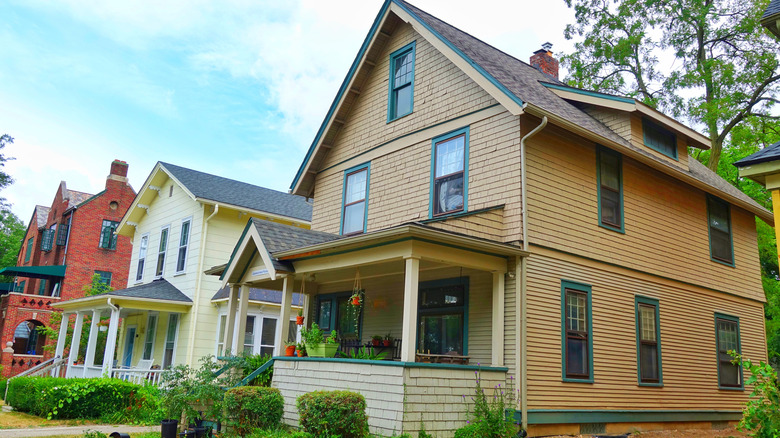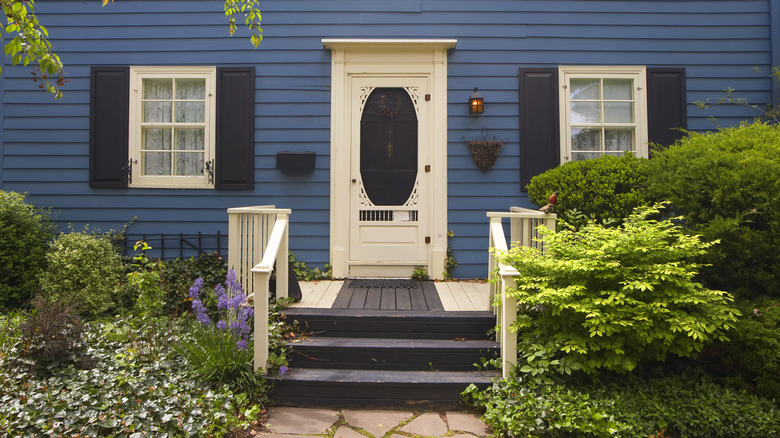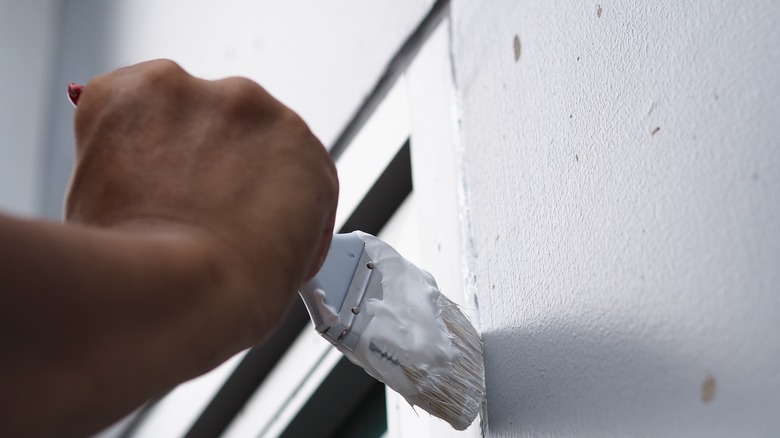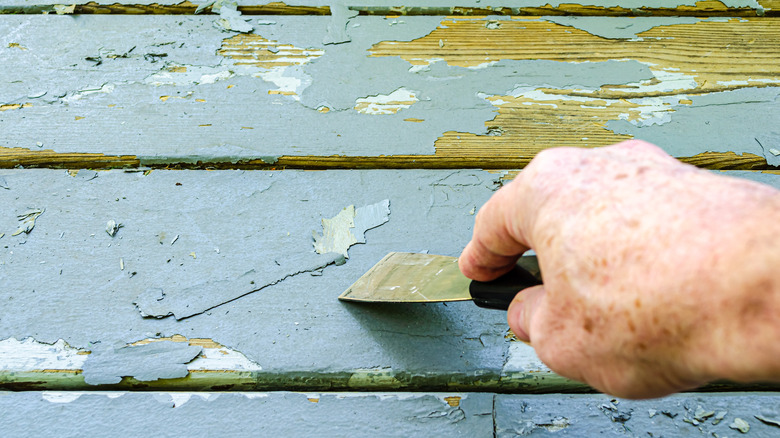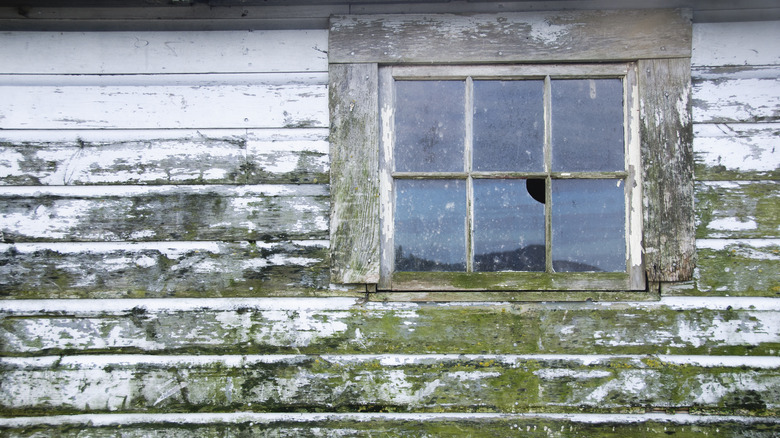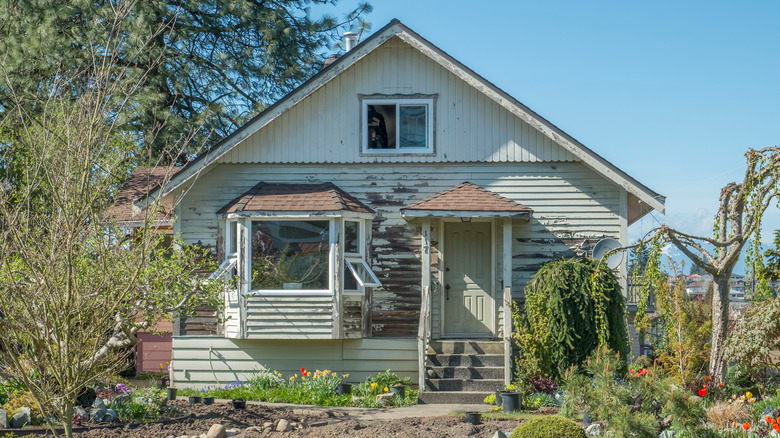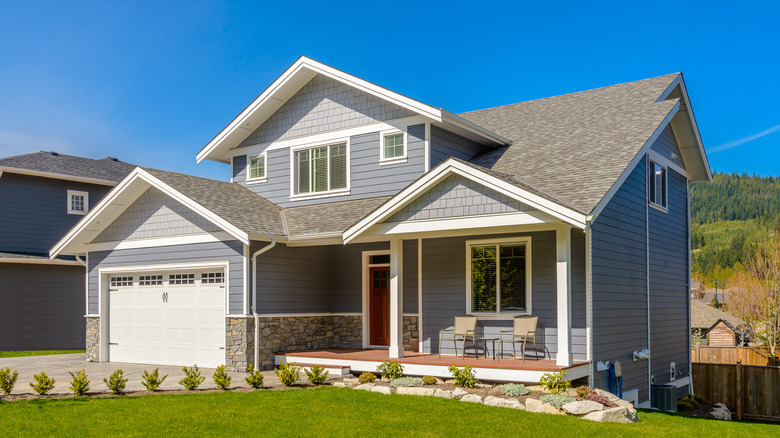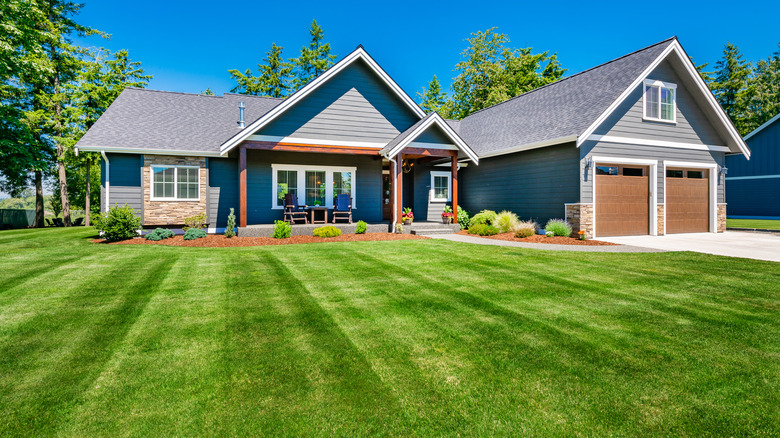Signs Your Home's Exterior Needs To Be Repainted
The condition and color of your home's exterior present a first impression to the world. In addition to the obvious curb appeal, high-quality paint protects the home's exterior from weather and shields the interior from water damage. You can easily inspect your home's exterior to look for signs that it's time to repaint.
You'll want to take action at the first signs of significant fading, wood rot, mold or mildew growth, bubbling and peeling paint, or gaps between the siding boards. It's time to make the necessary repairs and follow up with a new paint job. However, if it's been five to 10 years since your home was repainted or you're planning to put the house on the market, you might want to freshen things up even without visible damage. All these factors enter into the decision to repaint your home's exterior. It's a smart investment in maintaining a sturdy, healthy, and attractive home environment for yourself and your family.
You see signs of rot on the exterior wood siding and trim of your home
When you see wood rot on your siding, soffits, fascia, or the trim around your windows and doors, it's time to take action. Left unchecked, wood rot will only worsen and eventually compromise the integrity of your home's structure. Although repainting is the ultimate goal, you should never paint over wood rot. This practice simply masks the problem and allows the rot to spread and worsen. Rotted boards should be removed and replaced before repainting your house. Then, the new replacement boards should be coated with a high-quality primer before the overall repainting job begins.
Wood rot develops most frequently in heavily shaded areas that don't get enough sunlight to dry out the moisture in the wood. Therefore, it's a good idea to check for rot in the wood supports under decks, porches, and eaves. Rotting wood is more than a cosmetic problem, as it may signal the presence of leaks, damaged flashing, and faulty water run-off. Additionally, rot may appear in wood damaged by termites, insects, and mold.
Your home's exterior paint color has faded to a dull hue
The last time your home was repainted, you diligently searched for the just-right color you love. But now, that color has faded to a shadow of its former glory, and you're ready to repaint. If you're wondering why exterior paint fades, the answer is sunlight. The sun's ultraviolet (UV) rays affect the pigment molecules in the paint, causing the pigment to lose its vibrant color. Additionally, the oxygen, nitric acid, and ozone in the air may attack the paint pigment, resulting in a loss of color intensity.
Low-quality paints lose their color intensity within a few short years. However, when it's time to repaint, you can choose a high-quality paint formulated to resist fading. Be aware that dark paint colors tend to fade more quickly because they absorb more UV rays from the sun. White and light colors are not so prone to fading. Light brown, tan, and beige hues retain their color longer than bright blues, reds, and yellows.
The caulk is cracking and separating from the exterior surfaces
Paintable caulk prevents water from seeping into your home's interior. Caulk seals joints measuring up to ½-inch wide between the exterior walls and architectural features such as windows and doors. Additionally, it's an important protective coating around light fixtures and the openings for pipes and vents. Over time, the exterior caulk may begin to separate from the surfaces and show signs of cracking. This could be your cue to replace the caulk and repaint the exterior of your house.
First, use a putty knife to remove the old, cracked caulk. Then, for best results, select a type of exterior caulk designated as paintable. After painting a primer on the home's exterior and allowing it to dry, you can apply the new caulk. Do this job only when the temperature is above 40 degrees Fahrenheit, and rain is not in the weather forecast. Allow the caulk to cure for at least 12 hours. Finally, you can paint over the new caulk as you repaint the exterior of your home.
The paint on your home's exterior is cracking, bubbling, or peeling
You know repainting is necessary when the paint on your home's exterior shows cracks, blistering, flaking, or peeling. To do the job effectively, you'll need to understand why the paint began to separate in the first place. It could be that the paint was of poor quality or that it was thinned too much. Alternatively, it may have been applied over a dirty or dusty surface. In many cases, oil and alkyd paint bubbles and peels when moisture in the home's exterior wood reaches the surface, pushing the impermeable paint barrier away.
The proper steps for repainting include addressing the problems that caused your paint to peel, as well as preparing your home's exterior for a top-quality paint job. Scrape off any peeling paint and clean the exterior surfaces thoroughly. If you plan to repaint with latex paint, be sure you're not applying it over oil paint. You may need to scrape all the way down to the wood. Apply caulk and putty to areas where moisture might seep into the exterior materials. Then, start with a coat of high-quality primer and sealer. Follow up with coats of high-quality paint applied when the surfaces are completely dry. Do the job when the temperature is between 50 and 90 degrees Fahrenheit and rain is not in the forecast.
You see signs of mold or mildew growth on your home's exterior walls
Mold and mildew are living fungi that can spread and grow on your home's exterior surfaces. Left untreated, they cause serious damage that requires expensive repairs. You can recognize mold and mildew by their musty, rotting odors, along with a foul appearance. Mold may look either fuzzy or slimy, and it may vary in color from black to dark green to red. These fungi grow on home exteriors in hot and humid conditions with plenty of moisture in the air. Additionally, they grow in shaded areas that don't get enough sunlight.
If fungal growth is a problem on your home's exterior, it's time to repaint with a mold- and mildew-resistant paint. Before repainting, take care of the problem by cleaning your home's outside walls with a specialized cleaner for mold and mildew removal. Then, control water run-off by cleaning and repairing gutters and downspouts. Prune your trees and foundation plantings, allowing sunlight and air circulation to reach your home's exterior walls. After repainting, manage the mold and mildew problem by cleaning your home's exterior at least once a year.
Gaps appear between the boards of the wood siding
Your home's exterior is susceptible to water damage from rain, snow, humidity, and all types of weather events. Exterior paint protects the siding on your house by sealing it to prevent moisture from seeping into the boards. But when the paint is old and worn, it no longer provides adequate protection. It's a good idea to keep your home's exterior in tip-top shape by repainting before you see the signs of damage.
Moisture changes in the wood cause it to warp, swell, and contract. This movement may produce tell-tale gaps that warn you something's wrong. Water absorption leads to wood rot and invites pests such as termites and carpenter ants to carry out even more damage. Additionally, when gaps between the boards allow moisture to enter, it's likely that mold and mildew will grow and spread, causing further deterioration. When you see gaps between the siding boards, the recommended steps include repairing or replacing the damaged panels, scraping old paint, and applying new primer and paint.
It's been five to 10 years since your last exterior paint job
Signs of damage, such as peeling paint, wood rot, and mold growth, serve as warnings that your home's exterior needs repairs and repainting. However, you don't need to wait until you see these negative conditions before you initiate a new paint project. In fact, your home maintenance schedule will benefit from regular repainting every few years. Specifically, wood siding should be repainted every three to seven years. The paint job on aluminum siding will last five to 10 years, and painted brick will need repainting in three to five years.
Numerous factors affect the longevity of your home's exterior paint. Severe weather events, humidity, and direct sunlight cause damage to the paint. On the other hand, harsh, cold winters also exert wear and tear on your home's exterior. The quality of the paint job is an important factor, as well. If the surface is not cleaned and prepared properly, the paint may loosen after a short time. If the previous painting project did not include proper caulking, priming, and high-quality exterior paint, it might lead to a shortened lifespan for the outer coating.
You're ready to update your home's curb appeal with a new color
A feeling of immense satisfaction comes with updating and sprucing up your home's exterior. Even if your paint is not damaged or worn, there's nothing wrong with changing the color for a fresh, new look. This may be particularly true if you just moved into a new-to-you house. Although the previous owners might have repainted, you may not like the color. Instead of living with a color you hate, it's time for a repainting job. A typical color scheme might feature a neutral hue on the siding with a contrasting color on the trim.
You may want to paint your house in classic white and add a bright color to the front door. Light, neutral colors are easy to live with, including creamy off-white, beige, tan, taupe, and gray. These tones provide a restful background to show off a contrasting trim color. If you want to make the architectural features stand out, paint your siding in a darker color and choose stark white for the window and door trim, as well as soffits, fascia, and columns. Your landscaping will stand out if your house is painted in a light color. On the other hand, if landscaping is not a factor, a dark color on the home may appear wonderfully dramatic.
You plan to put your home on the market in the near future
When you're ready to sell your house, it's time to tackle numerous home improvement projects. Repainting the exterior is an important first step to attracting buyers to your home. According to the National Association of Realtors, the five most popular home exterior colors for 2023 include: off-white/cream, white, light gray, light brown, and medium blue.
The choice of light exterior colors is associated with the popularity of the modern farmhouse style. Light colors make a house look bigger as they reflect light and pull the home's features forward in the viewer's perception. Alternatively, dark colors make a home appear smaller but more permanent and connected to the earth. Buyers tend to avoid houses painted in bright, dark, or bold colors. However, these colors can be effective when used sparingly for a few architectural accents. For example, a Zillow survey revealed buyers are attracted to homes with black front doors.
